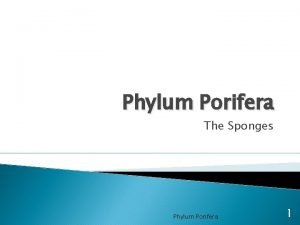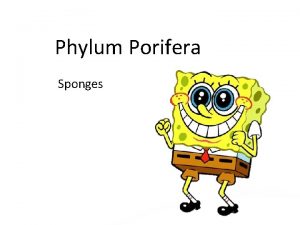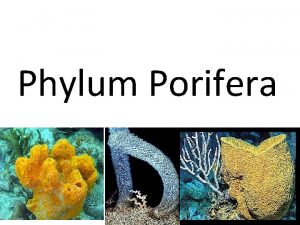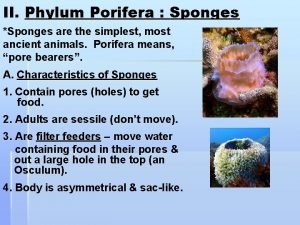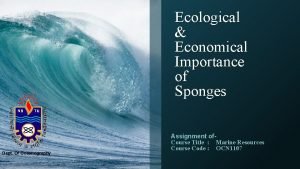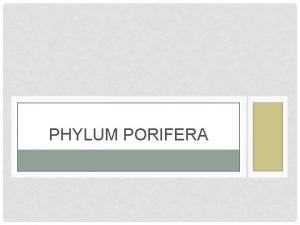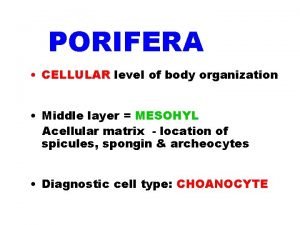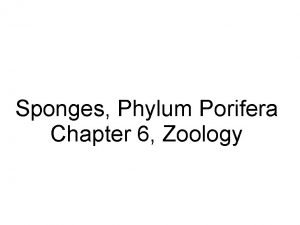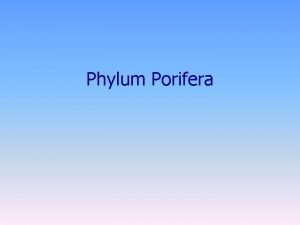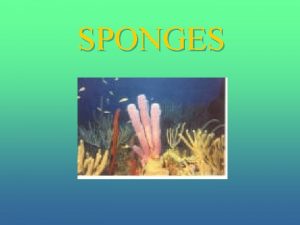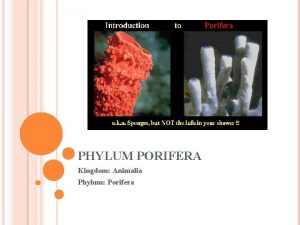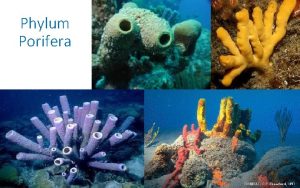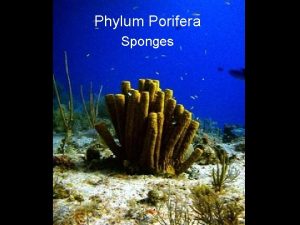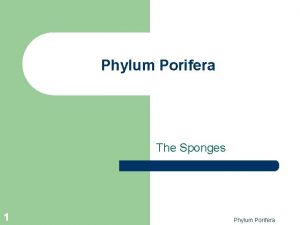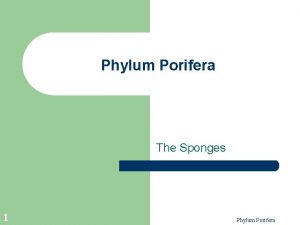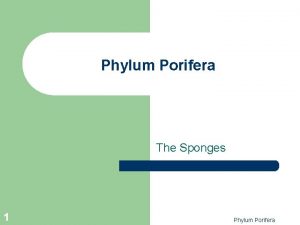SPONGES Phylum Representative Group Porifera sponges Sponges Distinguishing









- Slides: 9

SPONGES

Phylum Representative Group Porifera (sponges) Sponges Distinguishing. Fe Collar Cells atures General Habitat Level of Organization Symmetry Body Cavity Digestive Tract Benthic Cellular Asymmetrical None Respiratory Exchange Body Surface Circulatory System None Segmentation No FACTS

Details n n 5, 000 -10, 000 species All are multicultural or a group of specialized cells No tissue or organs Sessile : at the bottom of the sea These are deep sea glass sponges retrieved at 1400 feet. Glass sponges are typically very fragile and rarely hold their shape when transported to the surface.

BODY STUCTURE n n n When separated they can regroup Porocytes- flat cells on the surface which form canals allowing H 2 O to enter the sponge Choanaocytes/ Collar cells: have a flagellum that creates currents to trap food Osculum: large opening on top of the sponge Skeleton: made of spiculus (siliceous or calcareous supporting structures) & spongin (fibers made of protein)

Digestion n n Suspension feeder: eats food particles that are suspended in the water. Filter feeder: sponges actively filter food and oxygen from the water.

Continuation on Digestion There is also those who are Deposit feeders: which eat dead organic particles, or Detritus, that settle in the bottom of the ocean. n

Reproduction of Sponges n n Asexually: Through budding Sexually: When the collar cells develop into gametes. Gametes: there like those of other animals, large, nutrient rich eggs and smaller sperm cells that have flagellum. Broadcast spawning: when gametes are released into the water.

Continuation on Reproduction n n The early stages of development take place inside the sponge. Later a tiny, flagellated sphere of cells is released in water, which is planktonic Larva, called parenchymula larva that settles to the bottom and metamorphosis into the adult sponge.

